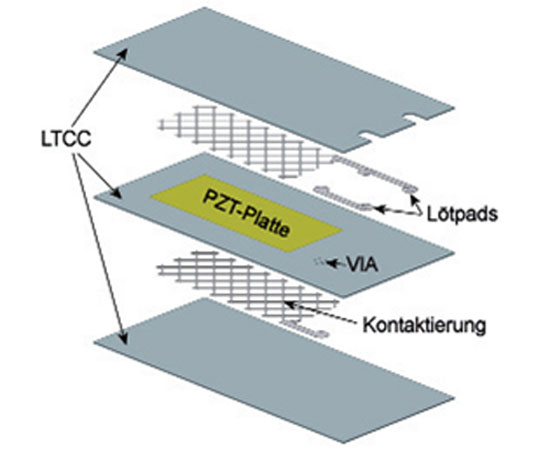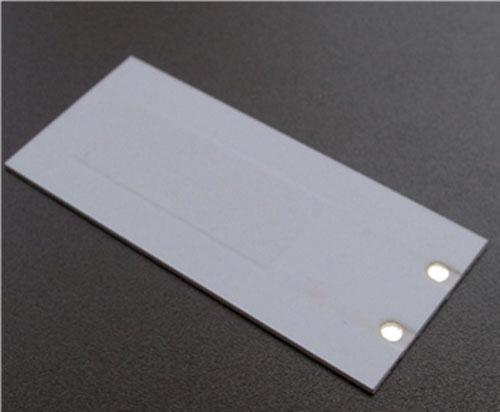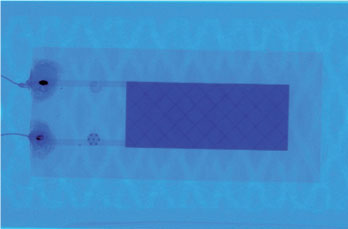


Robust piezoceramic modules are needed as sensors and actuators for applications under harsh environmental conditions (high and low temperatures, humidity, chemicals, and abrasive media).
A new method for the fabrication of piezoceramic modules fully based on inorganic materials has been developed at the Fraunhofer IKTS, recently. The novel packaging technology uses lamination of sintered piezoceramic plates with LTCC green layers and subsequent sintering. Thus the piezoceramic component is fully encased by the insulating carrier material. In general, this approach combines LTCC microsystems technology and piezo technology and allows for a tremendous improve of functional integration, e.g. 3D wiring, electronic control, sensing, actuation and ultrasound transduction.
Sensor-actuator-modules based on lead zirconate titanate (PZT) plates embedded in LTCC multilayer structures have been integrated successfully into aluminium metal sheets via die-casting. This confirms the idea of adaptive metal structures for vibration damping and structural control. In addition, structural health and condition monitoring of compound materials by the use of ultrasound waves are of great importance. Therefore acoustic microsystems are under investigation.
Services offered
- Development and fabrication of sensor-actuator-modules based on LTCC multilayer technology
- Custom designs and simulation based on our comprehensive experience in technology and simulation
- Electromechanical characterization and applications tests
Technical equipment
- Multilayer technology: via punch, via filler, isostatic and uniaxial lamination presses, structuring by laser and micro mill, sinter ovens
- Numerical tools: CAD (AutoCAD, Solid Works, Autodesk Inventor), FEM (ANSYS, ANSYS/CFX, ATTILA, FlexPDE), Circuit and system simulation (PSPICE, Matlab Simulink, FEMILAB, SCILAB)
- Characterization: microscopy, low signal measurements (dielectric constant, dielectric loss factor, electromechanical coupling coefficient), high signal measurements (ferroelectric hysteresis, voltage-deflection-curves, blocking forces, vibration behaviour), scanning laser vibrometer